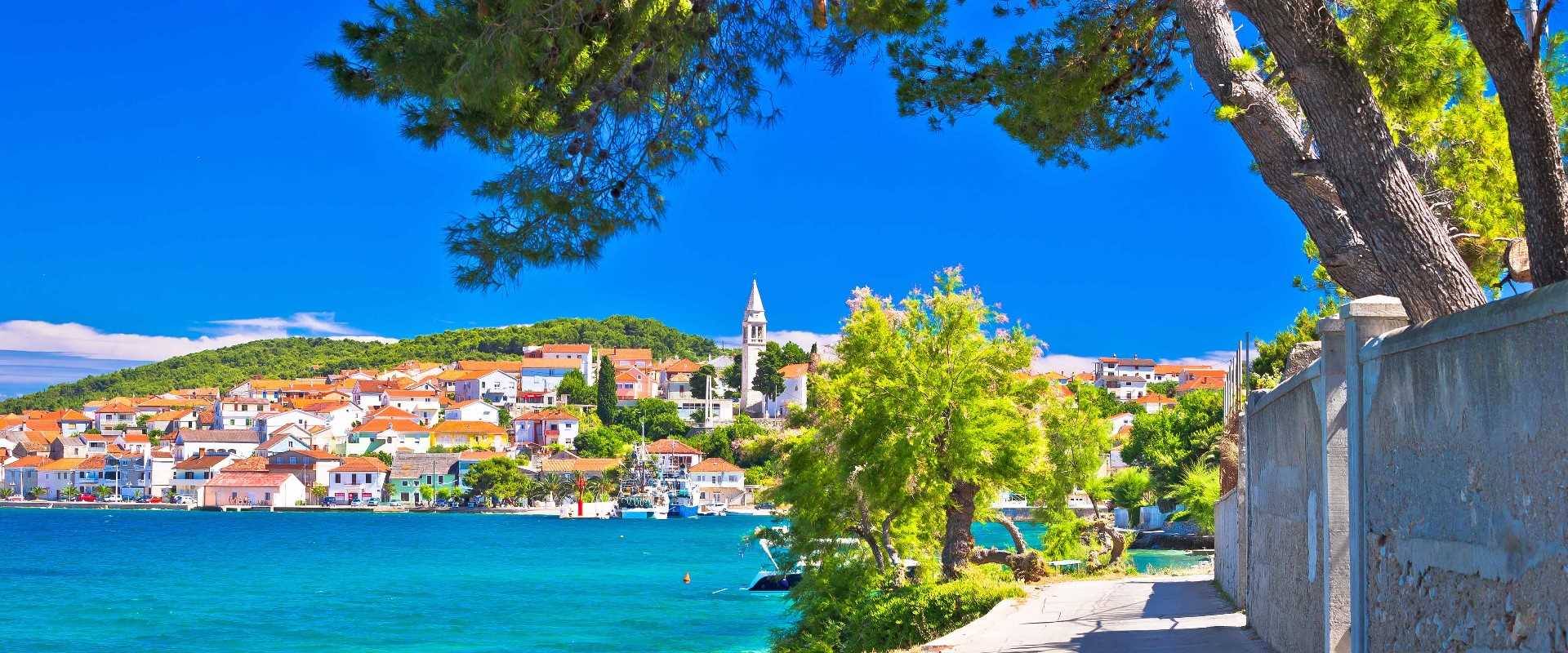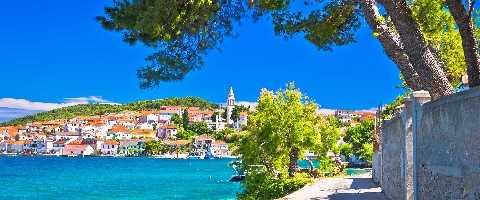It’s a town with a fascinating mix of building styles plus some excellent beaches (mostly pebbles), including Kolovare beach which is close to the centre of town and situated right in front of Hotel Kolovare which we feature.
An excellent catamaran and ferry service allow visitors to make a day trip to the islands of Ugljan, Pasman and Dugi Otok from Zadar where there are some real hideaway beaches.
Zadar was founded by the Ilyrian tribe of the Liburnians in the fourth century BC. It was later taken by the Romans who called it Iadera and developed the port, the fortifications plus a forum, public baths and a theatre. After the fall of the Western Roman Empire, Zadar became the capital of the Byzantine province of Dalmatia and a medieval town developed within the ancient walls. Later came Hungarians and the Venetians who called the town “Zara”.
After the fall of Venice in 1797, Zadar came under Austrian rule and remained so until World War 2 (except for a brief period of French rule 1805-1813). There is more, but suffice it to say that Zadar was officially reunited with the rest of former Yugoslavia in 1947.
All around Zadar are signs of the past.
In 2005, in attempt to bring something distinctive and vibrant to the Zadar riva (waterfront), the Sea Organ opened. Designed by Croatian architect Nikola Basic, this is a structure of pipes built into the Adriatic transforming the movement of the waves into music – and this was the world’s first musical pipe organ played by the sea. Close by is the Greeting to the Sun and, as the name suggests, is dedicated to the sun. Also designed by Nikola Basis and opened in 2005, it consists of 300 multi-layered glass plates placed on the stone-paved waterfront and with a 22-metre diameter which absorb sunlight and transform into a truly spectacular light show with a dance of colour for the evening.
In the old town, key sights include the Roman Forum, the church of St Donat (in the centre of the forum), the Sea Gate, the Land Gate and East of the Sea Gate the open-air fruit and vegetable market is worth a look.
Zadar has some wonderful and diverse entertainment, some low key, some loved by locals and the Arsenal cultural centre is a fabulous monument built in the 16th century under Venetian rule as a military warehouse and is located next to the city walls and close to the Sea Organ. Today it is the venue for live concerts from classical to rock music, art exhibitions, folklore events and even fashion shows.
There is a great ambience in Zadar: something of a relaxed buzz with a real summer festival feel on the streets from June-September together with a good restaurant -bar scene and some wonderful outdoor events. Visitors who have found this part of Northern Dalmatia in recent years are choosing to come back again and again. Hotels report many repeat visitors with a trend for “midi breaks” – five days in early summer, usually May or June then the same or a little longer in September or early October.
Did you know?
- Prices here are often a little lower than in some other more famous cities on the Dalmatian coast yet the history is fascinating, the architecture distinct and the sea is just as crystal clear beautiful
- One of Croatia’s most famous sportspersons, a certain Luka Modric and a long-standing award-winning footballer at Real Madrid and captain of the Croatian national team – hails from a small village very close to Zadar
- Cherries from the Zadar area are famous and a cherry flavoured liquor called “Maraschino” has been made in Zadar since 1821. Look out for it in cocktails and cakes as well as sipped neat.
- Zadar sunsets are rather spectacular and, during a short scouting visit, famous American film maker Alfred Hitchcock declared that Zadar had some of the most beautiful sunsets and women in the world.
Croatia has some glorious national parks and four of them are easy to reach from Zadar, either on your own using a hire car or on an organised excursion. Time from Zadar to:
Plitvice National Park (waterfalls and lakes, the largest) = 1 hour 45 minutes
Krka National Park (waterfalls, lakes, traditional village) = 1 hour
Paklenica National Park (gorges, mountains, caves, bunkers) 1= hour 15 minutes
Kornati National Park (over 100 tiny islands and reefs, usually a day trip visit by boat starting from Zadar and other nearby places on the mainland coast.
Day trips to these National Parks, the cities of Sibenik, Split or into the mountain villages of the Northern Velebit mountains are also easy to arrange.
Or consider a twin or multi centre holiday with a few days stay at one of the National Parks (we strongly suggest Plitvice or Krka where we offer two lovely hotels close to the park entrances). If islands appeal then the glorious islands of Rab and Krk in the Kvarner region are reached by catamaran direct from Zadar in around two hours (early June – mid September) or by road and short ferry (Rab) or road and bridge (Krk).





